Phoenix -- online software
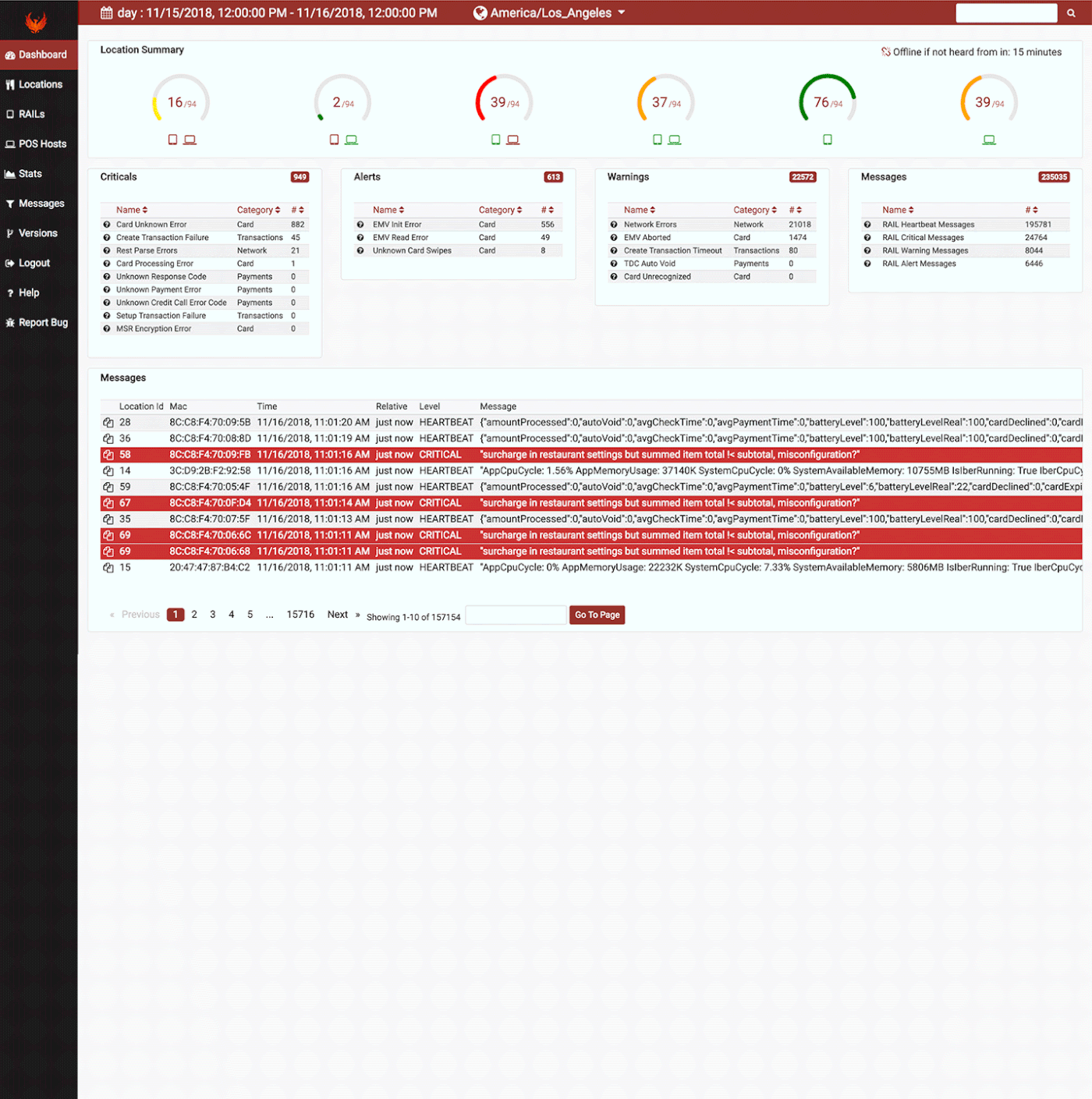
Project: Phoenix
My role: UX designer
Other team members, I worked with:
My role: UX designer
Other team members, I worked with:
Michael, Chief Technology Officer
Lisa, Sr. Vice President, Operations and Support
Taylor, Implementation Manager
Ryerson, Director of Production
Will, Software Engineer
Tools: Post-it, Pencil & paper, whiteboard, sketch, InVision, Microsoft Word
Date: 2018
Date: 2018
Overview: TableSafe.Inc support team uses Phoenix to monitor all RAILs’ work performance in all restaurants. TableSafe uses Phoenix as a tool to predict potential problems in RAIL devices.
Gathering requirements
Before I came to TableSafe.Inc, engineers had been contributing to creating the system (at that time, everyone called this system chatter board) for almost three years. They urged a UX designer to bring this concept and chatter board into real life.
Ryerson provided me the requirements for this project.
Studying the system and understanding the technical capabilities
Michael and Will helped me understand the chatter board and the technical capability for this project.
Here is my understanding of chatter board:
When RAIL is turned on, it sends a lot of data to chatter board about its physical performance, such as battery level, successful provision, network / WiFi errors, etc. And chatter board is able to display and filter data.
When RAIL is turned on, it sends a lot of data to chatter board about its physical performance, such as battery level, successful provision, network / WiFi errors, etc. And chatter board is able to display and filter data.
Understanding the user
Phoenix (The Final software) would help our support team and channel partners in the nationwide network to monitor the RAIL performance and predict the RAIL device’s potential problems in restaurants. Then the support team would give a proper response to the potential problems to our customers before our customers notice them.
To understand the users, I talked with Lisa, Taylor, and all members of the support team. I also talked with a few channel partners remotely.
When I was doing this project, I was also conducting user interviews, user observation, etc. to understand all users for all our products, including users of Phoenix.
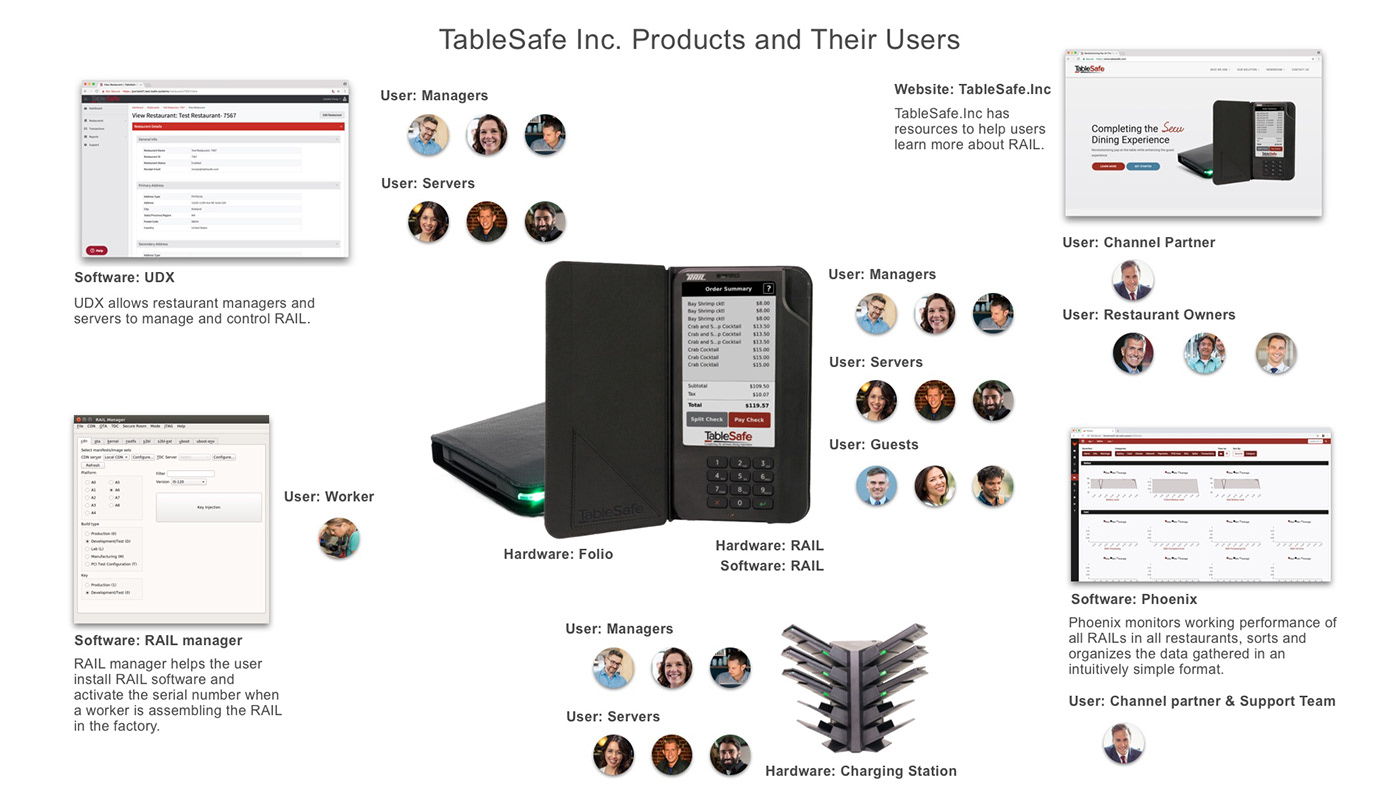
Personas and user cases

Ideation: discussion & whiteboard
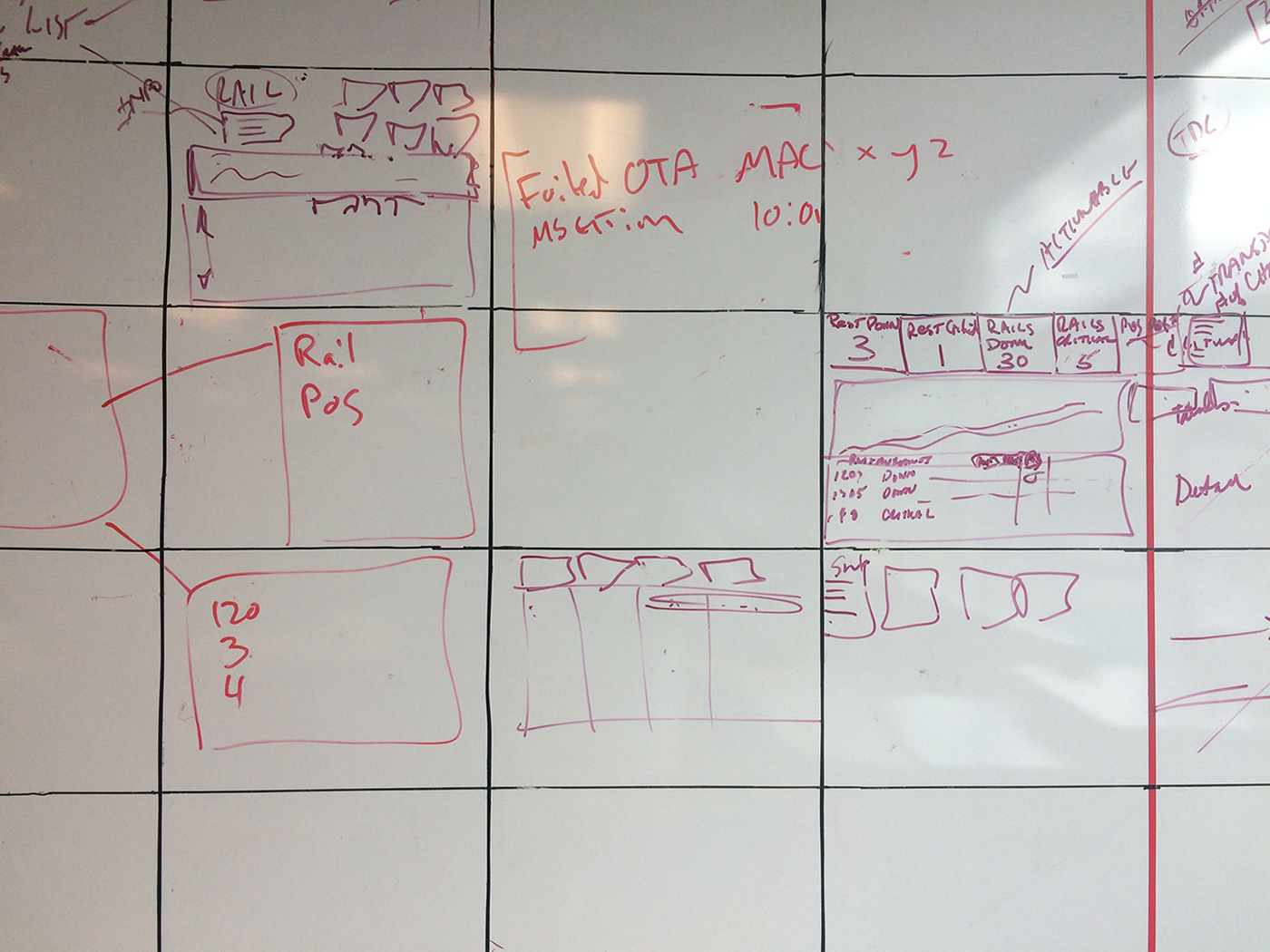
Michael, Ryerson, Taylor, Will and I had meetings to discuss different ideas related to Phoenix.
Iteration: low fidelity prototypes & usability tests

I created multiple low fidelity prototypes for team ideas and conducted usability tests with Taylor and his support team to figure out the best solution.
Iteration: high fidelity prototype & usability tests
Then I moved forward to create a high fidelity prototype for potential solutions and conducting usability tests with Taylor and his support team.

UI options
I adapted our Visual Identity guidance and provided UI options for the chatter board.

Option 1

Option 2
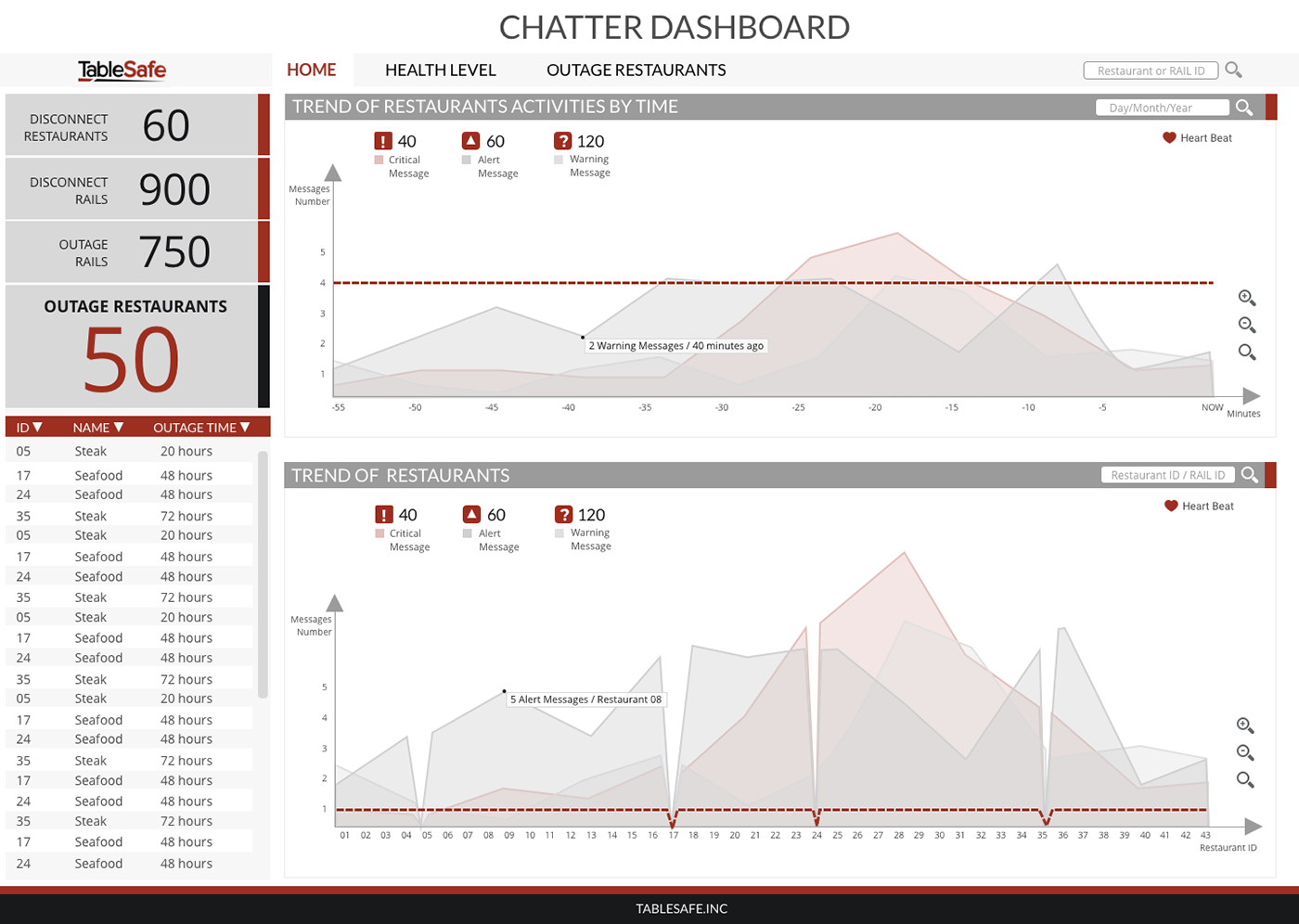
Option 3

Option 4
Iteration: high fidelity prototype & usability tests
I continued to create high fidelity prototypes. I also conducted usability tests, collected feedback and updated the fidelity prototypes.
Demo launch
At this point, we agreed that it was time to build a demo that would connect with and display dynamic data.
Will had built the demo and connected it with the RAIL devices in our lab and launched. When the demo launched, we changed the name of this system from Chatter Board to Phoenix.
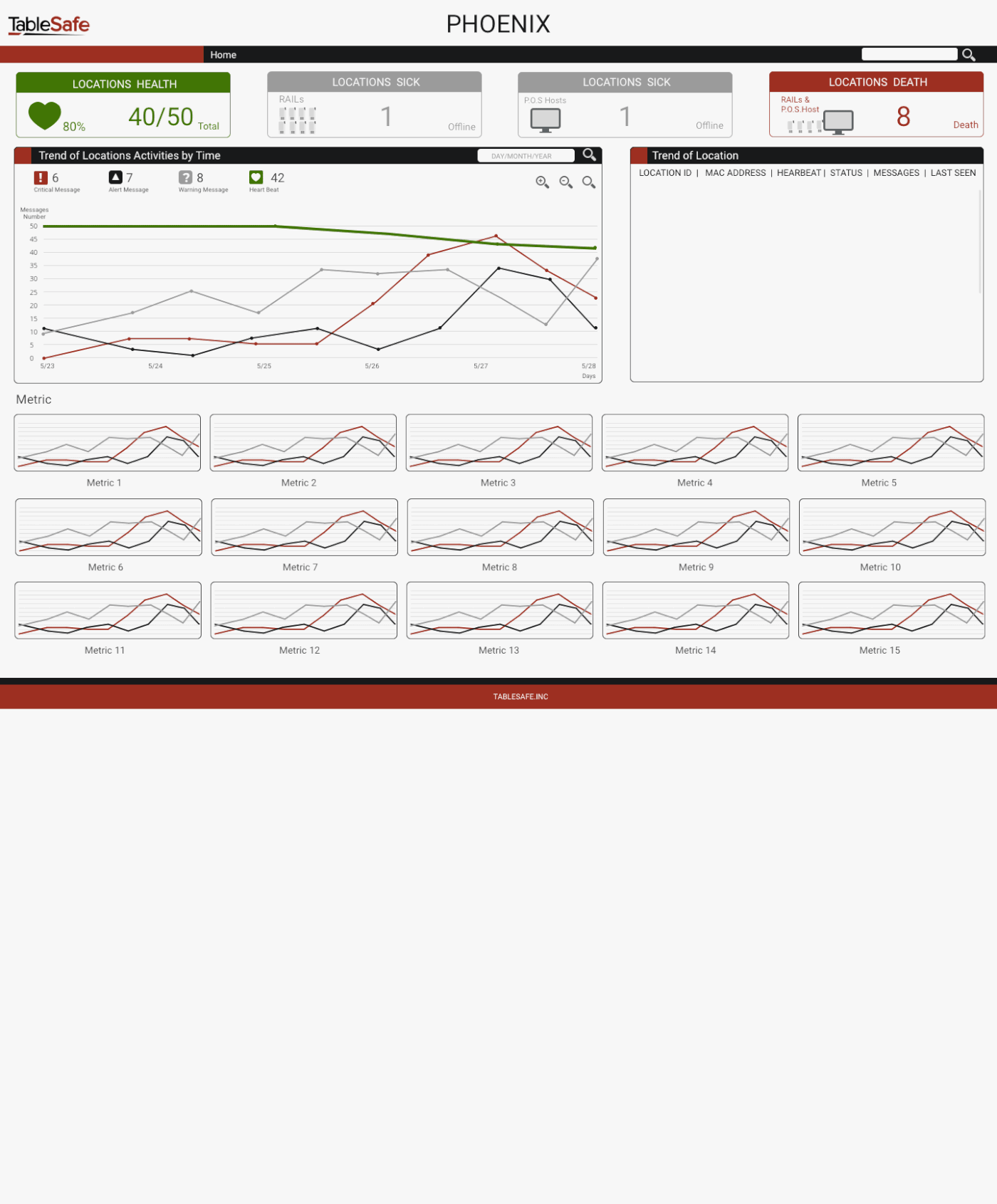
Iteration: usability tests & feedback collection & improvements
Because of the Demo launch, more people were able to participate and test Phoenix. I continued to conduct usability tests with the support team and collect feedback from the QA team and other teams. Then I passed this information to Will and he kept improving the user experience in the Demo.

Release
Will connected the real data from all RAIL Devices in all the restaurants nationwide with Phoenix and released Phoenix for the support team, channel partners, and customer service team to use.
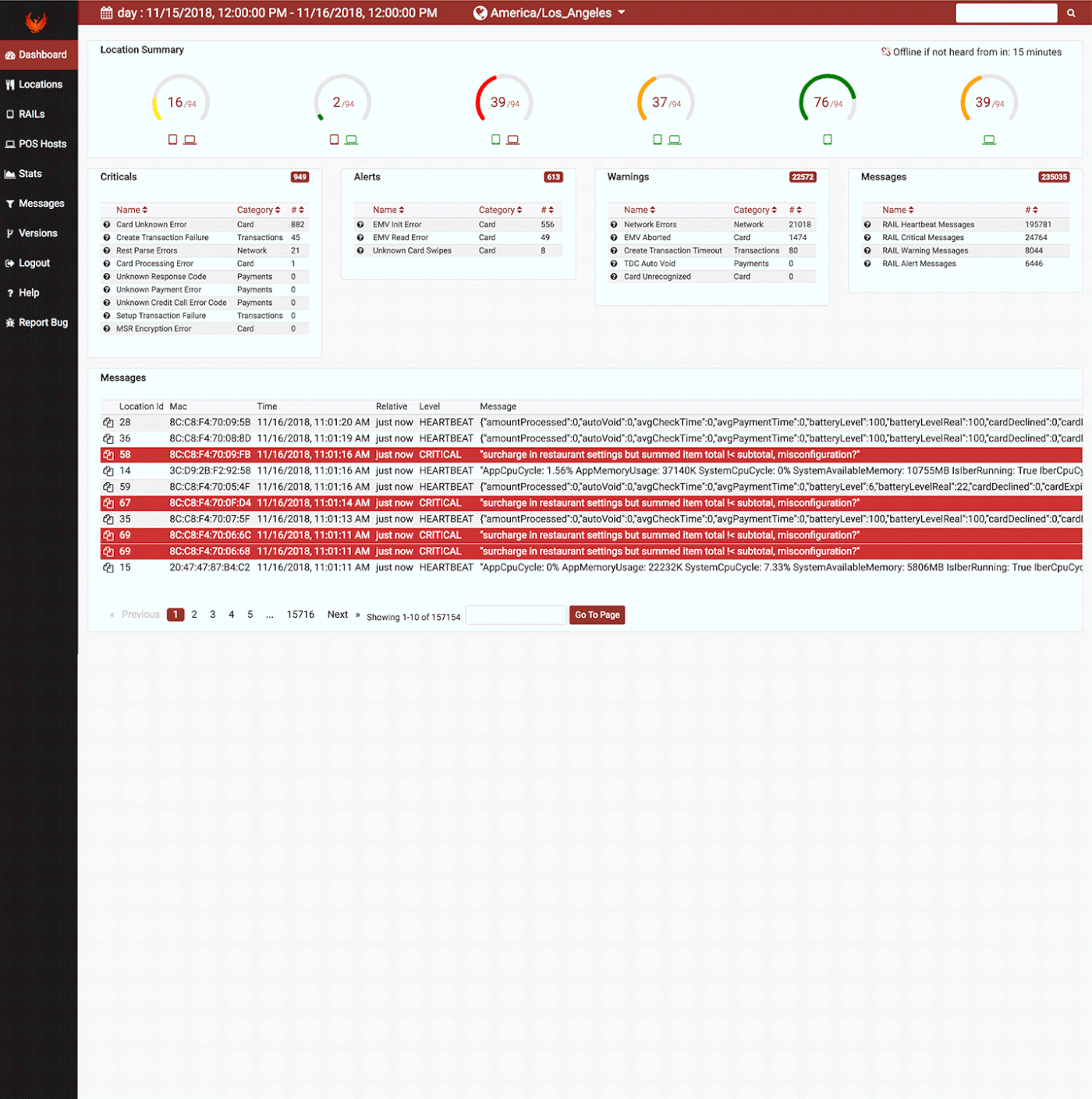
Iteration: collecting feedback from users & improving
After releasing Phoenix, I was still collecting feedback from it and creating a log of Phoenix user satisfaction for future improvements.
Reflection
From Phoenix, I learned that usability tests and iteration processes are very important for successful projects. The earlier I started usability tests and user-feedback-collection, the better-off the company would be in terms of time and money saved on whole-project development.


